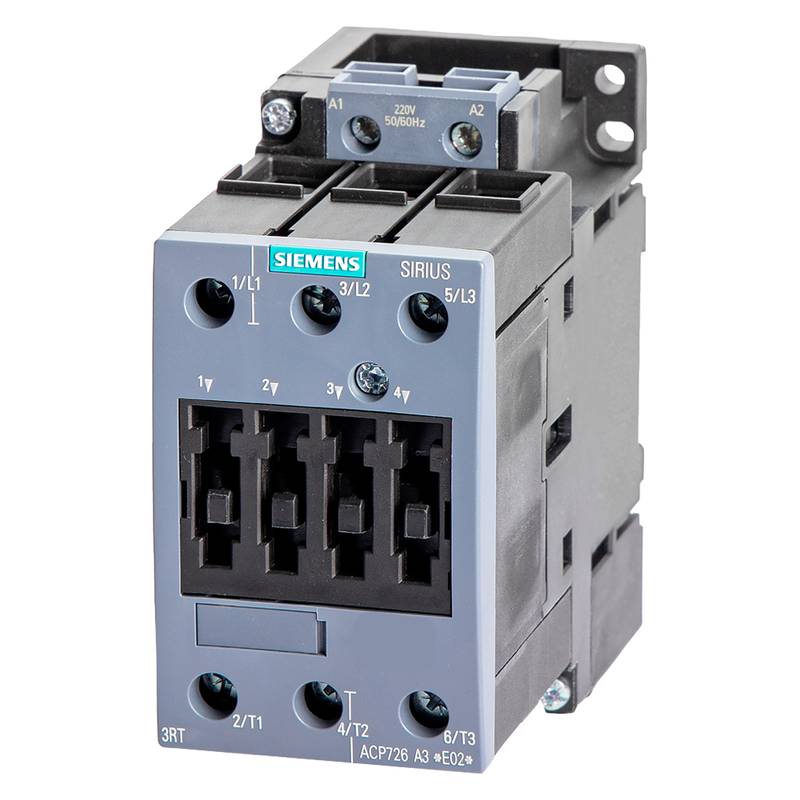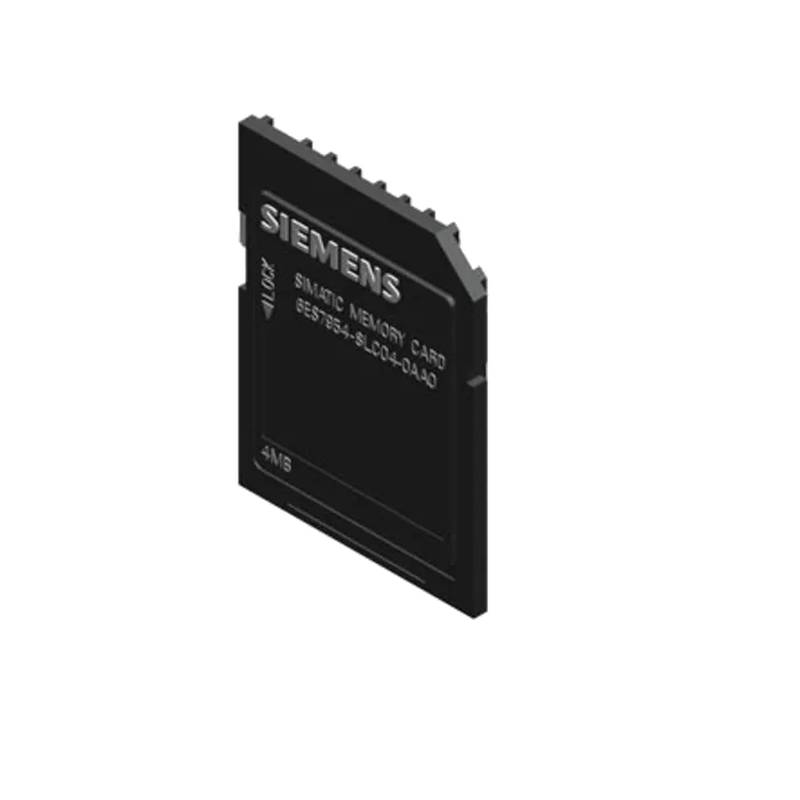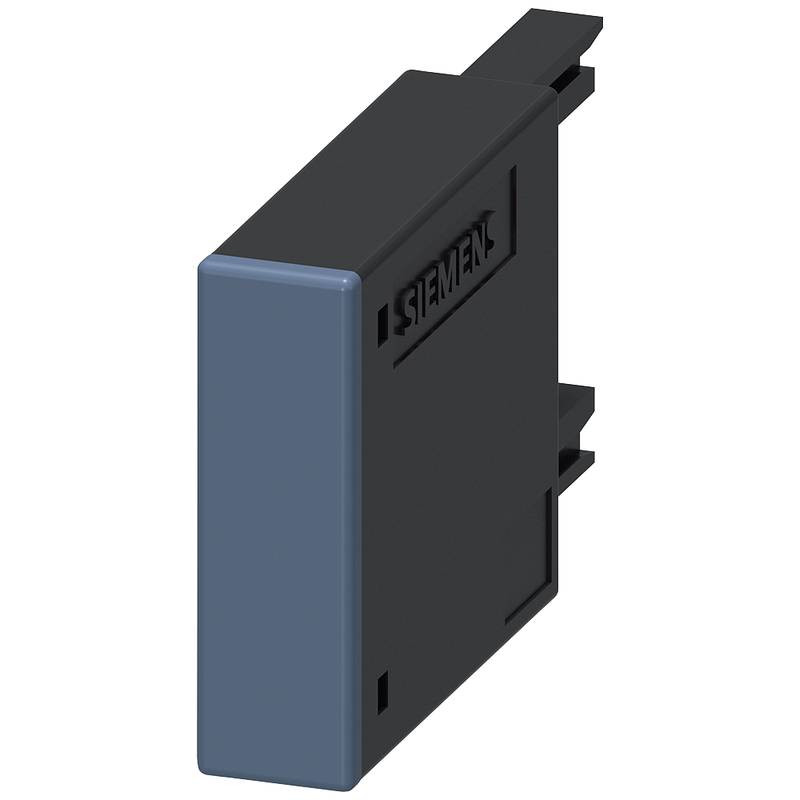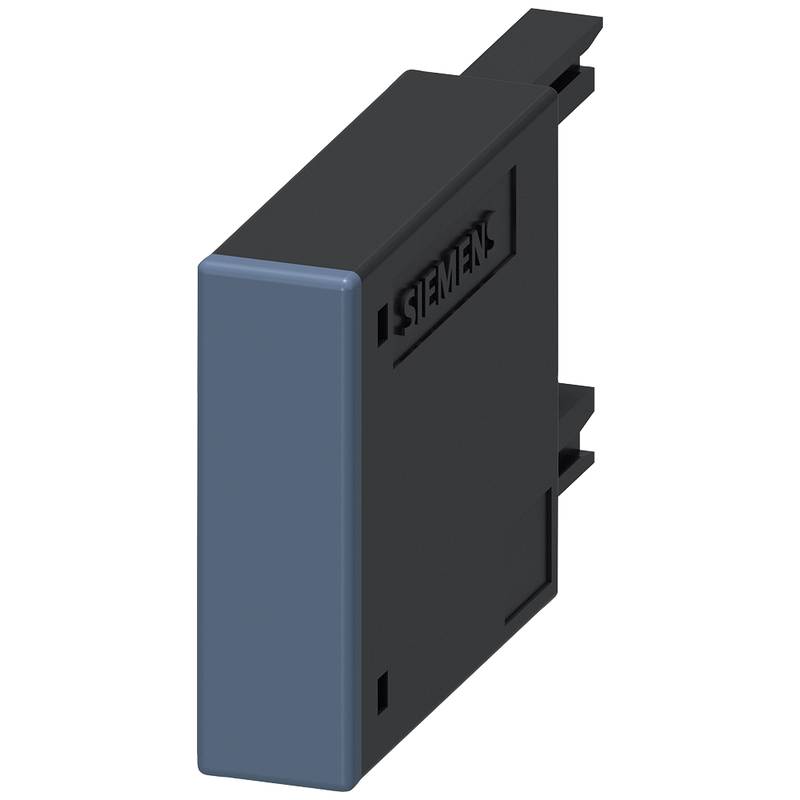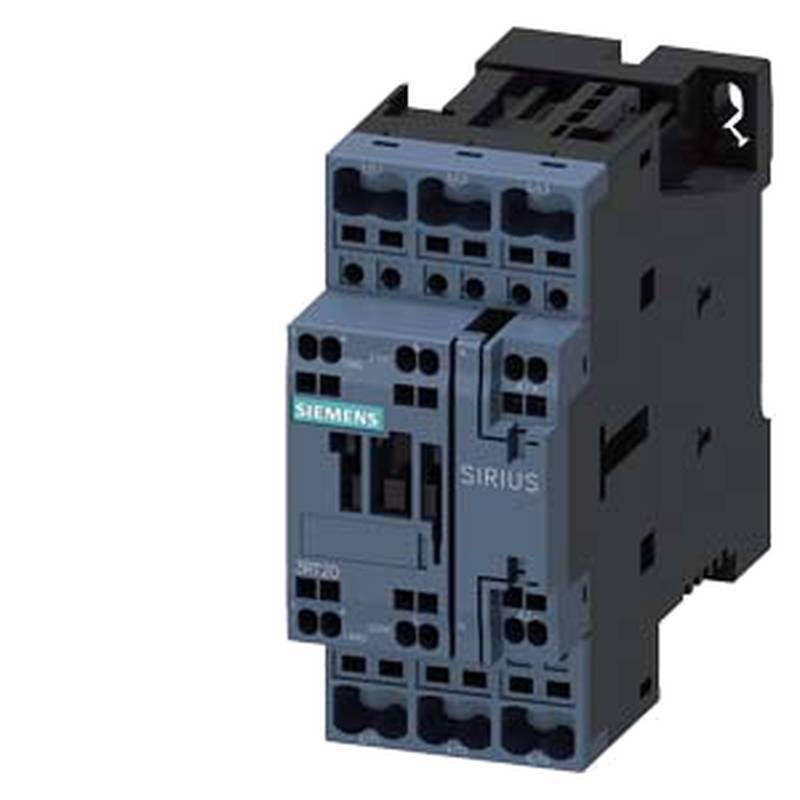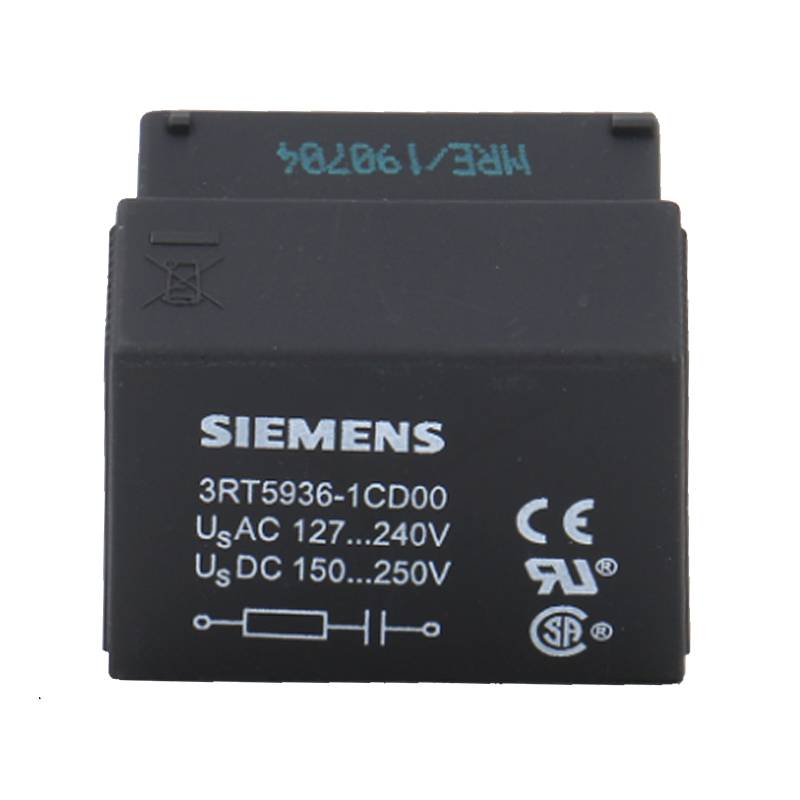
The Siemens 3RT5035-1AN20 SIRIUS high-performance contactor stands as a robust solution for industrial power control, offering reliable switching for loads up to 40A at 220VAC. Its key advantages lie in its superior durability, compact design, and seamless integration capabilities within the broader SIRIUS ecosystem. This contactor is engineered for demanding applications, providing exceptional performance and longevity, making it a preferred choice for engineers and system integrators seeking dependable motor control and power switching.
Product Specifications
| Feature | Specification |
| :------------------ | :------------------------------------------ |
| Product Type | Contactor |
| Series | SIRIUS 3RT5 |
| Coil Voltage | 220VAC |
| Conventional Free-Air Thermal Current (Ith) | 40A |
| Number of NO Contacts | 3 |
| Number of NC Contacts | 0 |
| Auxiliary Contacts | 1 NO, 1 NC (typically via accessory modules) |
| Control Circuit Type| AC |
| Enclosure Type | Open |
| Mounting | Screw or DIN rail |
| Dimensions (H x W x D)| Varies, but typically compact for its rating |
| IP Rating | Varies based on accessory usage, but base unit is open |
| Operating Temperature| -25 to +60 °C |
| Standards | IEC, UL, CSA |
Core Features & Market Positioning
The Siemens 3RT5035-1AN20 distinguishes itself through its high switching capacity and operational reliability, a hallmark of the SIRIUS line. Its design emphasizes ease of installation and maintenance, reducing downtime in critical industrial processes. Compared to similar products, the 3RT5 series offers enhanced endurance and thermal management, ensuring consistent performance even under high duty cycles. This positions it as a premium component for applications where failure is not an option, from motor control to power distribution. The integrated safety features and adherence to international standards further solidify its market leadership.
Key Application Scenarios
This Siemens contactor is ideally suited for a multitude of industrial applications, primarily in motor control circuits for starting, stopping, and reversing three-phase motors. It is frequently employed in pump control systems, fan management, conveyor belt operation, and general power switching within manufacturing facilities, water treatment plants, and HVAC systems. Its 40A rating makes it versatile for medium-duty industrial machinery and equipment requiring robust, dependable power interruption.
Practical System Integration Guidance
Integrating the Siemens 3RT5035-1AN20 into existing electrical systems is streamlined due to its standardized mounting options and clear terminal markings. The contactor can be directly mounted onto a 35mm DIN rail or secured via screw terminals. Wiring the main circuit involves connecting the power supply to the input terminals and the load to the output terminals. The 220VAC coil can be controlled by a PLC output or a manual control circuit, with appropriate fusing and overload protection recommended. For expanded functionality, auxiliary contact blocks can be easily snapped onto the front or side, enabling status feedback to control systems or interlocking functions.
Operation and Risk Mitigation
Proper operation of the Siemens 3RT5035-1AN20 requires adherence to electrical safety standards and the manufacturer's guidelines. Ensure the coil voltage precisely matches the supply (220VAC) to prevent premature failure or malfunction. Always implement appropriate overcurrent protection, such as fuses or circuit breakers, and overload relays to safeguard the motor and the contactor from damage due to excessive current. Regular inspection of electrical connections for signs of wear or overheating is crucial. In the event of contact welding or coil failure, immediate shutdown and replacement are necessary to prevent system damage and ensure personnel safety.
Scalability & Long-Term Value
The Siemens 3RT5035-1AN20 offers significant long-term value through its compatibility within the extensive SIRIUS modular system. This allows for easy expansion and adaptation as system requirements evolve. Users can readily add various accessories, including auxiliary contact blocks, surge suppressors, and time delay modules, without needing to replace the base contactor. Furthermore, its robust construction ensures a long operational lifespan, minimizing replacement costs and contributing to overall system reliability. Integration with modern industrial automation platforms and IIoT solutions is facilitated by its standardized design, making it a future-proof component for smart factory environments.
Frequently Asked Questions (FAQs)
Q1: What is the maximum motor HP rating for the Siemens 3RT5035-1AN20 at 400V?
The Siemens 3RT5035-1AN20 contactor is rated for 40A at 220VAC, and its motor power rating varies with voltage. At 400VAC, it typically supports up to 18.5kW (25 HP) for AC-3 duty. Always consult the detailed datasheet for precise HP ratings across different voltages and duty cycles.
Ensure your application's power requirements fall within the specified limits to guarantee optimal performance and longevity of the contactor. Incorrectly sizing contactors can lead to premature failure, overheating, and potential safety hazards.
Referencing the official Siemens documentation or utilizing their selection tools will provide the most accurate motor HP compatibility for this specific contactor model. This ensures a safe and efficient integration into your motor control system.
Q2: Can I use the Siemens 3RT5035-1AN20 with a DC control voltage?
No, the Siemens 3RT5035-1AN20 is designed specifically for an AC control circuit voltage of 220VAC. It cannot be directly operated or controlled using a DC voltage source. Using an incorrect control voltage will damage the coil and render the contactor inoperable.
To control this contactor with a DC signal, you would need to incorporate an interposing relay or a DC-to-AC converter. This ensures that the AC coil receives the correct voltage for reliable operation.
Always verify the coil voltage specification of any contactor before installation. Mismatching control voltages is a common cause of component failure in industrial automation systems.
Q3: What is the typical lifespan of a Siemens 3RT5035-1AN20 contactor?
The lifespan of the Siemens 3RT5035-1AN20 is measured in millions of electrical and mechanical switching cycles. Its actual operational life depends heavily on the application's duty cycle, load conditions, and environmental factors.
Siemens SIRIUS contactors are engineered for high durability, offering excellent resistance to wear and tear. Proper installation, correct load matching, and effective protection against surges and overloads significantly extend its service life.
For demanding applications, consulting the technical datasheet for specific switching cycle ratings under various load conditions (AC-1, AC-3) is recommended. This provides a realistic estimate of its expected performance over time.
Q4: How do I wire auxiliary contacts to the Siemens 3RT5035-1AN20?
Auxiliary contacts for the Siemens 3RT5035-1AN20 are typically added as snap-on modules to the front or side of the main contactor body. These modules come in various configurations, such as 1NO+1NC or 2NO+2NC.
To install, carefully align the auxiliary contact module with the designated slots on the contactor and firmly push until it clicks into place. Wiring then involves connecting your control circuits to the terminals on the auxiliary contact module, following the standard NO (Normally Open) or NC (Normally Closed) designations.
These auxiliary contacts are invaluable for signaling the status of the main contactor (e.g., energized or de-energized) to a PLC or for implementing control logic such as interlocking between multiple devices.
Q5: What type of overload protection is recommended with the 3RT5035-1AN20?
The Siemens 3RT5035-1AN20 contactor is designed to be used in conjunction with an overload relay for comprehensive motor protection. Siemens offers a range of compatible overload relays, such as the 3RU11 or 3RB3 series, which can be directly mounted or attached to the contactor.
These overload relays monitor the motor current and trip the control circuit if an overcurrent condition persists, thereby de-energizing the contactor and protecting the motor. They provide adjustable trip settings to match the motor's full load current (FLC).
In addition to overload relays, appropriate short-circuit protection, typically via fuses or miniature circuit breakers (MCBs), is also essential to protect against catastrophic faults and ensure the overall safety of the electrical installation.
Q6: Does the 3RT5035-1AN20 have screw terminals or spring-loaded terminals?
The Siemens 3RT5035-1AN20 contactor typically features screw terminals for both the main power circuit and the coil connections. This provides a secure and reliable connection, especially in environments prone to vibration.
While screw terminals are standard, it's always best to confirm the specific terminal type in the product's detailed technical specifications or datasheet, as variations can exist for different sub-models or regional versions.
For applications where rapid wiring is a priority or in less demanding environments, spring-loaded terminal options might be available on other SIRIUS contactor series. However, for the 3RT5035-1AN20, expect screw terminals for robust connections.
Q7: What are the dimensions of the Siemens 3RT5035-1AN20?
The exact dimensions for the Siemens 3RT5035-1AN20 are approximately 73mm (height) x 45mm (width) x 70mm (depth), not including any auxiliary attachments. These dimensions make it a relatively compact contactor for its 40A rating.
Its compact footprint is a significant advantage in control panel design, allowing for space savings and easier integration into existing enclosures. This is particularly beneficial in applications where panel real estate is limited.
Always refer to the official product datasheet for the precise dimensional drawings and mounting clearances. This ensures proper physical integration and ventilation within your control cabinet.
Q8: What is the difference between AC-1 and AC-3 ratings for this contactor?
AC-1 rating refers to the contactor's capability for switching non-inductive or slightly inductive loads, such as resistive heaters. It uses the full conventional free-air thermal current rating (40A for this model).
AC-3 rating is for starting squirrel-cage motors and switching them off. This duty involves higher inrush currents during motor start-up, so the AC-3 rating is typically lower than the AC-1 rating for the same contactor.
For the Siemens 3RT5035-1AN20, the AC-3 rating will be less than 40A, often around 18.5kW at 400V. It's crucial to select the contactor based on the AC-3 rating for motor control applications to ensure reliable operation and prevent contact damage.
Q9: Can I use the 3RT5035-1AN20 for DC switching applications?
No, the Siemens 3RT5035-1AN20 is designed exclusively for AC switching applications with its 220VAC coil and AC-rated main contacts. It is not suitable for directly switching DC loads due to the different arc extinguishing characteristics required for DC circuits.
Switching DC loads requires specialized DC contactors that incorporate arc chutes or other mechanisms to safely dissipate the DC arc. Attempting to use this AC contactor for DC loads can lead to severe arcing, contact welding, and potential equipment damage.
If you need to control DC circuits, you must select a contactor specifically designed for DC voltage and current ratings. Always consult product specifications carefully to ensure correct application.
Q10: What are common failure modes for Siemens contactors like the 3RT5035-1AN20?
Common failure modes include contact welding, where the electrical contacts fuse together due to excessive current or prolonged arcing. Coil burnout, often caused by overvoltage, undervoltage, or frequent switching beyond design limits, is another frequent issue.
Mechanical wear of the armature, springs, and moving parts can lead to erratic operation or complete failure to engage or disengage. Additionally, insulation breakdown within the coil or between terminals can result from moisture ingress or age.
Preventative maintenance, such as regular inspection of contacts, ensuring correct voltage, and implementing proper overload and short-circuit protection, significantly mitigates these common failure modes and prolongs the contactor's service life.














